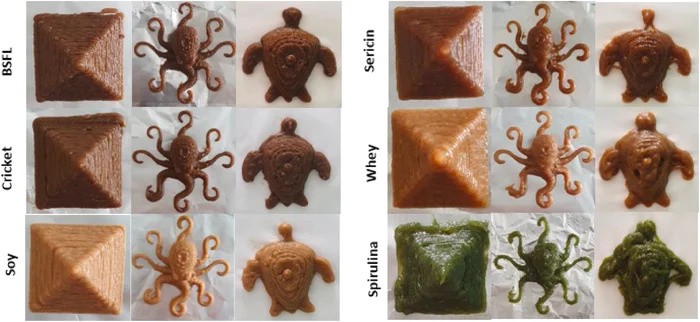The key to solving future food supply problems might be 3D Printing!
A team of researchers at the Singapore University of Technology & Design (SUTD) aims to provide a solution to address food supply problems with the use of 3D Printing.
Does this mean they will print any food through a machine? Not exactly. Instead, they will be printing something odd - insects!

3D Printing An Alternative Protein
The researchers have decided to improve the flavor of widely consumed vegetables such as carrots by mixing them with 3D-printed insects.
For many people, the look and flavor of such alternative proteins might be unsettling. But according to Chua Chee Kai, study co-author and professor at Singapore University of Technology and Design, this is where the adaptability of 3D food printing rises to the challenge by transforming how food is presented and overcoming consumer inhibitions.
As reported first by Azom, it is difficult to combine different food inks and optimize them for 3D food printing. Trial and error is the key method used to move the process forward.
To facilitate the process, Prof. Chua and his group collaborated with experts from the Khoo Teck Puat Hospital (KTPH) and the University of Electronic Science and Technology of China (UESTC).
Yi Zhang, Study Principal Investigator and Professor, University of Electronic Science and Technology of China said in a statement:
"Alternative proteins may become our main source of protein intake in the future. This study proposes a systematic engineering approach to optimizing food inks, thereby enabling easy creations and customizations of visually pleasing, flavorful, and nutritionally adequate food enhanced with alternative proteins."
Adjusting Protein Ink Compositions
The study team adjusted the protein ink compositions with three variables-carrot powder, proteins, and xanthan gum- employing the central composite design approach. The carrot powder helps give the created inks mechanical strength, as well as flavor, nutrition, and color.
The team also conducted experiments with various proteins, including sericin, soy, spirulina, crickets, and larvae of the black soldier fly. Optimized inks obtained the highest printability and the lowest syneresis after experimentally generated inks were tested for 3D printability and syneresis.
According to Aakanksha Pant, corresponding author of the paper and Research Associate from SUTD, researchers may use a similar methodology for optimizing 3DFP food inks that make up complicated multicomponent food ingredients as a result of the experiment's response surface method approach.
3D Printing has certainly advanced throughout the years. For instance, a method for waste-free 3D printing of wood products in any shape has been developed by Massachusetts Institute of Technology (MIT) researchers.
The researchers did this by combining a tree's DNA into the materials that their machine would 3D print. Users will achieve the same look and feel as wood products while receiving the exact size and measurements of the material.
With these experiments, 3D Printing might prove to be substantial in solving more world problems in the future.
Related Article : 3D Printing's Contribution to Several Industries: Can It Solve Current Complex Problems?
This article is owned by Tech Times
Written by Joaquin Victor Tacla
ⓒ 2025 TECHTIMES.com All rights reserved. Do not reproduce without permission.




